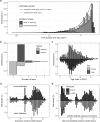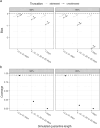The latency time of SARS-CoV- 2 Delta variant in infection- and vaccine-naive individuals from Vietnam
- PMID: 40221669
- PMCID: PMC11993988
- DOI: 10.1186/s12879-025-10898-3
The latency time of SARS-CoV- 2 Delta variant in infection- and vaccine-naive individuals from Vietnam
Abstract
Background: The latency time (from infection to infectiousness) guides the choice of measures required to control an infectious disease. Estimates of the SARS-CoV- 2 latency time are sparse due to lack of appropriate and representative data. Infection time is rarely known exactly and exposure information may be subject to several biases. Information on the endpoint requires repeated testing. Moreover, estimation is challenging because both the starting point and endpoint are typically interval censored and data may be subject to length-biased sampling (truncation).
Methods: We collected detailed information on exposure from public health reports produced during an outbreak with the SARS-CoV- 2 Delta variant in Ho Chi Minh City, Vietnam, in May-July 2021. Using a custom digital form and application facilitated reliable choices on exposure window. This comprehensive data set on exposure and test results from 1951 individuals, collected in the absence of large-scale vaccination or earlier infection, is the first of its kind outside of China. We accounted for the doubly interval censored nature of the observations and went beyond the standard assumption of a constant infection risk over calendar time (exponential growth) and allowed for flexibility regarding the latency time (generalized gamma distribution). We addressed right truncation due to a cutoff in data collection and a finite quarantine length. Employing a Bayesian approach, using the program JAGS, made the analyses relatively straightforward.
Results: Assuming exponential growth, our estimate of SARS-CoV- 2 Delta variant's mean latency time was 3.22 (95% Credible Interval 2.89 - 3.55) days; the median was 1.81 (95% CrI 1.44- 2.16) days; the 95 th percentile was 10.98 (95% CrI 9.91 - 12.41) days. These values were much larger if a uniform infection risk was assumed.
Conclusions: Using a Bayesian approach with the JAGS program, we were able to estimate the SARS-CoV- 2 latency time distribution of the Delta variant in infection-naive and vaccine-naive individuals. Estimates were sensitive to the assumptions made regarding the risk of infection within the exposure window. Compared to earlier studies, the median latency time was shorter, while the 95 th percentile was larger. Our results stress the importance of thoughtful data collection and analysis for evidence-based control of an infectious disease.
Keywords: Doubly interval censored data; Generalized gamma distribution; Latency time; Quarantine length; SARS-CoV- 2; Truncation.
© 2025. The Author(s).
Conflict of interest statement
Declarations. Ethics approval and consent to participate: We made retrospective use of data that had been collected by the Ho Chi Minh City Center for Disease Control (HCDC). Contact tracing was performed during the pandemic period with the purpose to contain the outbreak. Most of the interviews were done via phone. Written informed consent was not collected. An MOU agreement between OUCRU and HCDC allowed us to use their data and publish results. Consent for publication: Not applicable. Competing interests: The authors declare no competing interests.
Figures











References
-
- Demers J, Fagan WF, Potluri S, Calabrese JM. Testing-isolation interventions will likely be insufficient to contain future novel disease outbreaks. Math Biosci. 2025;384:109432. 10.1016/j.mbs.2025.109432. - PubMed
-
- Jiang XL, et al. Latent period and incubation period with associated factors of COVID-19 caused by Omicron variant. Zhonghua Yu Fang Yi Xue Za Zhi [Chin J Prev Med]. 2023;57:659–666. ISSN 0253-9624. 10.3760/cma.j.cn112150-20220926-00925. - PubMed
MeSH terms
Supplementary concepts
Grants and funding
LinkOut - more resources
Full Text Sources
Medical
Miscellaneous

